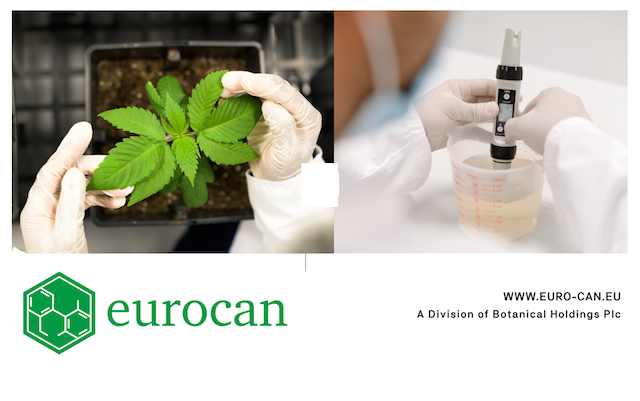Good manufacturing practice (GMP) regulations make sure that applicable drugs (including cannabis derived products) are safe for use and achieve their quality and efficacy claims. Current good manufacturing practice (cGPM) regulations for drugs contain minimum requirements for the methods, facilities, and controls used in manufacturing, processing, and packaging of any drug product to ensure compliance with GMP regulations.
GMP standards are comparatively more costly to implement when building or setting up a product manufacturing facility, but the access to international markets which results from achieving such standards offers an increased return on investment.
Achieving GMP certification is a key objective for medical cannabis companies with international ambitions and for sales in Europe stringent regulations (EU-GMP) are already in place. EU-GMP is the same standard to which European pharmaceutical companies are held and it is only medical cannabis products from EU-GMP certified facilities (or equivalent), which can be sold in the EU.
Maintaining a competitive edge in the cannabis industry is not easy, but it can be made easier with the right team, tools, data and physical infrastructure. There are a variety of areas to consider when designing a facility to achieve GMP standards and a few of these are discussed below.
Physical Infrastructure (Building & Utilities)
Considerations which need to be borne in mind when designing or building a GMP, pharmaceutical grade facility include the following:
· The ability for a production facility to handle a significant tonnage of cannabis dry flower per year under GMP conditions is challenging. It demands a complex physical layout with a clear definition of flows of materials and personnel throughout the facility (which will include several rooms for each stage of the process – trimming, drying, milling, packaging, extraction, isolation, purification, etc.)
· Achieving GMP standards mean that the environmental conditions (temperature, humidity, differential pressure, Co2 etc.) in a facility must be continuously monitored, controlled, and registered in process-critical areas. If records are generated electronically by a Building Management System (BMS), this must be compliant with applicable regulations (e.g., 21 CFR Part 11 and EU Annex 11 of GMPs). The BMS will also have alarms that, if conditions fail to achieve specification, the issue can be recorded and addressed immediately.
· In facilities which deal with both cultivation and processing activities, cultivation operations (under GACP standards) must be separated from GMP operations. In this type of facility material flows should be designed in a way that allows unidirectional flow of materials between distinct rooms/areas and – ideally – a separation of personnel.
For every classified room (ISO 8, ISO 7, ISO 6, ISO 5) In the facility (anteroom/gowning room, clean zone, etc) some key variables must be taken into consideration. Only with these is it possible to determine critical parameters such as total airflow in cubic feet per minute (CFM); air changes per hour (ACH) per classified room, to name a few.
Within a properly designed facility, equipment, utilities and processes used for the manufacture of medicinal products will be subject to qualification and validation during their life cycle as part of the GMP requirements of the product and process. For example, periodic HVAC testing (Performance Qualification) will be performed to assure compliance with specified variables.
Personnel & Team Composition
The size and complexity of a company’s activities should be taken into consideration when developing an organizational structure.
For every aspect of the production process, it is important to define the size of the team required/involved and how it is going to be positioned within the business’ organizational structure. A strong human resources function will ensure that staff communication is transparent and effective.
All individuals must have sufficient education and training for the tasks that they will be required to carry out. Building a diverse team that can provide different perspectives is important to promote efficiencies as it can prevent any issues or delays in the future.
Training should be provided for all personnel whose duties require them undertake activities that could directly or indirectly affect a product´s quality. This includes technical, maintenance and cleaning personnel, newly recruited personnel and for others involved in any way in GMP operations. Training must contain theory and practice concepts of the chosen quality management systems and GMPs. Continuing training should also be given, and its effectiveness should be periodically assessed. Training programmes should be defined before starting operations.
Quality Management Systems
“Quality management” is a wide-ranging concept covering all matters which, individually or collectively, influence the quality of a product. Quality management therefore incorporates GMP and other guidelines & best practice standards.
When developing a new pharmaceutical quality management system (PQS) the size and complexity of the operation needs to be considered and the design of the system should incorporate appropriate risk management principles.
The benefits of setting a PQS and applying Quality by Design (QbD) methodologies on product development processes are tangible and measurable, reducing mistakes that lead to costly re-work, mitigating inefficient operational flows, reducing the risk of cross-contamination and product mix-ups and eliminating bottlenecks in your production process.
”Seed-to-Sale” Tracking & Audit
Implementing an industrial standard, reliable enterprise resource planning (ERP) system is of a paramount importance to any businesses producing legal cannabis products and needs to be undertaken as early as possible in the set-up process given that implementation lead times can be considerable.
A well designed and implemented ERP system:
· will ensure that legal cannabis producers have the data that they need to produce, test, and prove that they are producing superior products, which is critical to their business strategy.
· can also be tied to customer-service systems, should any compliance issues arise; detailed track-and-trace ERP capabilities will promote rapid reactions in such circumstances. can optimize production based on demand forecasts, production capacity, and supplier constraints, thereby reducing time to market;
· will leverage “track and trace” capabilities for loT control and serial number tracking, raw material inspection, in-process checks, and final inspections to be made considering the generation of relevant Certificate of Conformance (CoC) reports;
· will include order processing, production management, supply chain management, IoT and serial number trackability and traceability, compliance reporting, costing and financial management.






